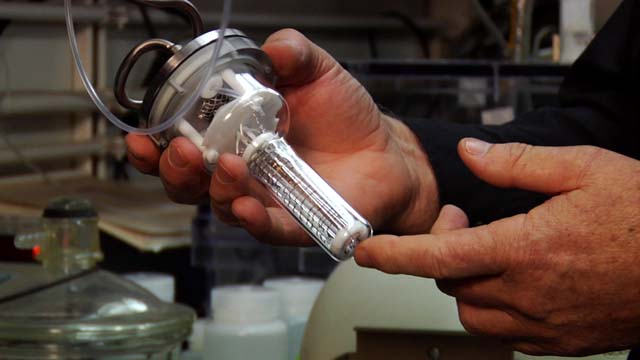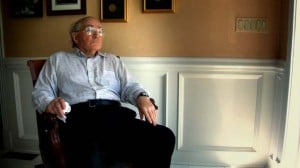THE BELIEVERS is the highly anticipated and very timely documentary on Cold Fusion, created by 137 Films, a non profit documentary production company whose mission is to “promote science literacy through storytelling”.
Of course the past dramas and ongoing sagas of Cold Fusion make for the perfect cinematic storytelling exploration. 137 Films tapped into a subject with a fascinating, controversial past, and a future which many believe, will completely change the world.
Since they began the project over 2 years ago, the excitement over Cold Fusion has rapidly grown, especially with the current Andrea Rossi E-Cat news. This makes “The Believers” a very important examination of how this technology arrived from the Pons and Fleischman of yesterday to this new found excitement of today, with all the arguments from supporters and detractors along the way.
If the massive increase in traffic and emails for the www.ColdFusionNow.org website is any indication, then the public’s hunger for wanting to learn more about Cold Fusion is present and rapidly rising. “The Believers” is landing in the right place at the right time. The filmmakers genuine desire, as seen in the interview below, for providing a balanced picture and creating a meaningful story, may make this one of the most relevant and fascinating films of the year.
I asked directors Clayton Brown and Monica Ross from 137 Films 10 questions on their upcoming documentary.
1. When is your new documentary on Cold Fusion, “The Believers”, going to be released? Any film festivals lined up?
We don’t have a release date yet. That depends on how it will be premiered and what deals we make (knock on wood). Our first film, The Atom Smashers, was acquired by the PBS show Independent Lens and we also secured home video, internet, and international distribution through a variety of different organizations. We’ve gotten more interest earlier with The Believers, so we hope we can make a similar deal for broadcast or (fingers crossed) a small theatrical release. We haven’t lined up festivals yet because we’re still working on it; we should start those plans later in the summer. Also depends on sales agents and other not particularly interesting behind-the-scenes machinations.
2. How long did it take to make the film?
We started work on The Believers in January, 2009, so it will take about 2.5 years by the time we’re done. The Atom Smashers took us four years, so we’re getting faster!
3. What inspired or excited you to take on this project? Did the surprising 2009 60 minutes episode on Cold Fusion set off a light bulb at all, perhaps prompting a realization that a feature film should be devoted to this?
We started work on the film before the 60 minutes episode was aired. We were drawn to it through some historical reading we had done. Our initial attraction (and much of what drives us today) was the complicated story of Pons and Fleischman in 1989. We didn’t anticipate when we began working on the film how much attention the pursuit of cold fusion would garner twenty years later. Our interest has always been, both as a company and as the directors of this film, the strange relationship America has with science. This involves the role that media, money, politics, and personal stories play in the pursuit of knowledge. This is a very complicated story with competing interests, opposing viewpoints and personal stakes, so it immediately appealed to us as filmmakers. The 60 Minutes broadcast convinced us that this was not just a historical story but, in fact, a very timely one, with a debate that still was very current.
4. What was the general reaction/response when you told people you were making a film on Cold Fusion?
Many people said “Cold Fusion? I thought that was a hoax/debunked/dead!” We also got a lot of eye-rolling from our physicists friends, although some of them expressed interest and surprise that there are still people pursuing it. Most people believe we are making a film promoting Cold Fusion, so we have to explain to them that our film is neutral, neither promoting nor discounting it, and is in fact a film more about science and the process of science — the collision of science, ideas, the media, greed, pop-culture, and solutions to complicated problems.
5. Was it difficult finding funding or investors (if that’s the route you took for financing) due to the controversial nature of Cold Fusion technology?
We have no investors, since documentaries don’t make a great deal of money. As well, documentaries must remain neutral so we don’t accept investors who might expect a certain story to be told. Funding is always a challenge, and as always we are continually writing grants. The controversial nature of Cold Fusion hasn’t really been an issue because we are not making a documentary that promotes cold fusion, but rather tells a fascinating story that takes place in the world of science. Our mission as a company is to raise science literacy through storytelling, and this film definitely falls within that mission because it raises some complex and compelling questions about science and scientists.
6. Who are a few of the key people interviewed in the film? Where did you travel to?
We have interviewed Martin Fleischmann, Mike McKubre, Ed Storms, George Miley, Robert Parks, George Lubell, Chase Peterson, two graduate students of Stan Pons, Mike Melich, Peter Hagelstein, James Martinez, Irving Dardik, Gary Taubes, and many others, both supporters and detractors of Cold Fusion. We’ve traveled to both coasts, Salt Lake City, the midwest, and to Rome, Italy. We’ve earned some travel miles!
7. How was investigating this topic different from your last film, The Atom Smashers?
The Atom Smashers was largely centered around Fermilab, located just 40 miles from us. We spend hundreds of hours at that facility with several physicists, becoming familiar with their work and their lives. It was a story that unfolded in real time and one which we had very little control over. The Believers has a key component that occurred in the past with quite a bit of historical and archival footage, which is different. As well, the science in The Atom Smashers was very esoteric and within the realm of mainstream science. The science of Cold Fusion, on the other hand, is immediately relevant, but debated by many people. However, both involve the intersection of science, media, and culture and have fascinating characters and high stakes, which we are drawn to.
8. Was filming completed before Andrea Rossi came out with his announcement of the E-Cat device, or did you get a chance to touch on the latest news of his invention due out later this year?
Filming is still not completed, so we are in the midst of trying to integrate that development into the film. It is helpful in that it answers the question many film distributors and broadcasters have: “why this story, and why now?”
9. I’m sure you knew going in the interesting possibilities and potential realities for Cold Fusion, upon completing the film did your feelings/viewpoint change? Did your excitement for the possibilities grow?
As filmmakers telling this story, we have remained neutral as best we can. As I mentioned earlier, our intention with this film is neither to promote nor debunk Cold Fusion. Our feelings about it haven’t changed, because we feel that it is a very important story with lots to say about America’s relationship with science. Anyone who hears about the obvious benefits of Cold Fusion is hopeful about what it would mean for the world. However, as filmmakers and documentary storytellers, our mission is to remain skeptical. So it might be more accurate to say that we knew about the excitement that many people had for cold fusion when we started, but we also knew the resolute certainty many others had about its impossibility. As filmmakers the collision of those two viewpoints interests us very much.
10. You also included James Martinez in the film who studies media and the effects technology has on society. Does The Believers go into this sometimes conflicting, oftentimes infuriating intersection of culture and technology; how this incredible energy discovery’s biggest opponent seems to have been the established cultural memes of media and science?
Yes, we explore that. Ed Storms describes mainstream science as having a certain orthodoxy that is governed in many ways by physicists. Historically, there has always been a rivalry between chemistry and physics. With the announcement of Cold Fusion in 1989, two electro-chemists claimed to have made an incredible discovery in the field of nuclear energy, the arena of physicists. Some people believe the physicists reacted with particular aggression to refute such a discovery because the chemists were playing in the physicists sandbox, to paraphrase one of the subjects in our film. However, physicists to this day strongly believe that what Pons and Fleischman claim was impossible according to the laws of nature. It is telling that most of the physicists we talk to, when they hear that people are still pursuing cold fusion, blink in surprise and say “why? We debunked that 20 years ago.” Needless to say they haven’t paid any attention to more recent developments. One difficulty with this type of research is that, unlike the work we explored in The Atom Smashers, which has no patents or secrecy involved, so it’s difficult to come to a conclusion about the validity of science in the absence of readily available documentation (one of the fundamental complications of the Pons and Fleischman story). However, mainstream science often denies the importance of mavericks who challenge orthodoxy, and that fascinates us too. History is full of them: some Cold Fusion believers point to Galileo as a genius who defied the currently established “laws of nature” with a greater truth. Yet some physicists point to the legion of so-called discoveries that have proven to be mistakes. So, in short, rather than finding that intersection you mention as infuriating, we in fact find it fascinating! We hope our film generates questions and discussions on all sides and gets skeptics and believers talking to each other.
– Clayton Brown and Monica Ross, co-directors of The Believers
Visit www.137films.org
Here’s the trailer for THE BELIEVERS
The Believers trailer from 137 Films on Vimeo.





